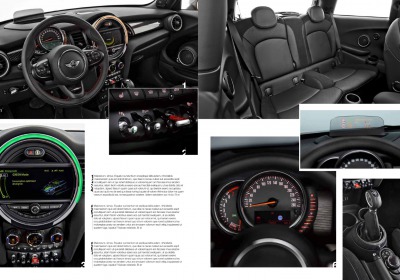New-look Interior Motives Winter 2013/14 issue out now
Mon, 13 Jan 2014The winter edition of Car Design News' quarterly interior design publication, Interior Motives magazine, is out now sporting more pages and a brand-new layout designed to put the exclusive sketches, development images and high-quality photographs that accompany each story in their best possible light.
As ever, the issue features in-depth design development articles on the most interesting and important concept and production vehicles launched in recent months. But the revamped magazine's larger format and more sophisticated layout explore their design with a level of detail and glamour never seen before in publishing.
This issue's cover star is Citroën's Cactus concept, which made its debut at the Frankfurt show in September of last year. The Cactus concept has its roots in the C-Cactus concept of 2007 and is the precursor to a new C-Line range that will be launched next year under the Citroën brand.
Project Director Mark Lloyd explains the philosophy behind the car: "We live complex, overloaded lives and current automotive design doesn't compensate for that. As manufacturers, we continually add features; we add design complexity. Cactus sets out to question this. Are two individual front seats the best solution? Why does the IP need to be so big? What can we simplify? With the simplicity and purity of Cactus you're less pre-occupied."
Another highlight from Frankfurt, the Volvo Concept Coupe, gives up its design secrets in the winter edition. Designed by interior design boss Robin Page under the guidance of Volvo design director Thomas Ingenlath, it marks a new era of bolder, more cohesive design that promises to put the Swedish carmaker at the cutting edge of modern Scandinavian design. As Thomas Ingenlath likes to put it, "the vanilla days are over".
The remainder of the issue is given over to the most notable debuts from the more recent Tokyo and LA auto shows. The all-new MINI, whose development we explore here from first ideation sketches to the finished product that appeared at Tokyo, undoubtedly made the biggest splash in production circles. The biggest challenge, we were told by interior design boss Oliver Sieghart, was balancing the desire to create a much calmer, more sophisticated interior than its predecessor's while staying true to the car's racing roots.
"We started with three different propositions for the interior," reveals Sieghart. "In all cases, though, the instruments were already sitting on the steering column, but they had different shapes. And all three stayed loyal to the large central instrument which is THE Interior design ‘face' of the MINI brand."
Other Tokyo show cars to be put under the spotlight include the Nissan BladeGlider, whose radical tapered design Nissan design boss Shiro Nakamura is determined to put into production, and has been in and out of the news ever since it was unveiled. "We thought it was a more future-type vehicle," reveals Satoru Tai, design director for Nissan's product design department.
"But when we realized it could actually happen, we chose a more production-ready approach. At first we imagined a racing cockpit but then realized that, given its energy-saving brief, we wanted a less aggressive and more peaceful feel. This car doesn't attack anything, it's about a coasting feeling... gliding in fact."
Also explored in depth this issue is Suzuki's Crosshiker concept. Featuring an innovative HMI system and an interior that is as striking as it is well executed, it was one of the surprise stars of the Japanese event. Work began on the Crosshiker concept in early 2013, with the entire Suzuki design team coming up with sketch proposals for a "crossover for female adults with a playful mind" under the guidance of Suzuki design director Yoshio Takeuchi and project chief designer Yasukazu Yuuki. "We made sketches based on keywords such as "avant-garde" and "artistic", says interior designer Syunya Sakurai. "We were not inspired by car designs but by architecture, modern art and other cultural references."
Completing this new-look issue of Interior Motives is an exclusive behind-the-scenes article on the development of Ford's Edge concept. This LA show car previews an all-new global model designed under the ‘One Ford' program. The catchphrase during its development was "dynamic sanctuary"; the goal to combine Ford's well-known ‘kinetic design' form language with a calmer interior layout, a higher H-point, and additional head- and knee-room for all five passengers.
"Our target customers are mature and affluent; they live a hectic life, so we wanted them to enjoy a very serene environment," reveals interior design manager, Hak Soo Ha. "But at the same time, we didn't want to create a space that was so boring that you fall asleep."
For more details on this and other issues of the magazine, plus information on how to subscribe or download digital versions from the App Store, visit http://www.interiormotivesmagazine.com
By CDN Team

